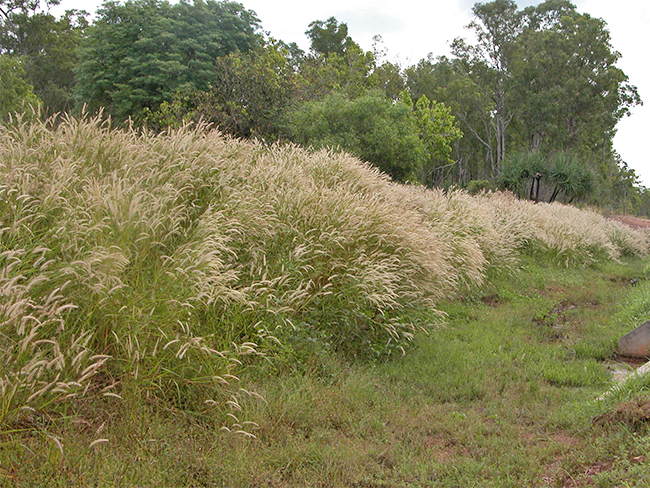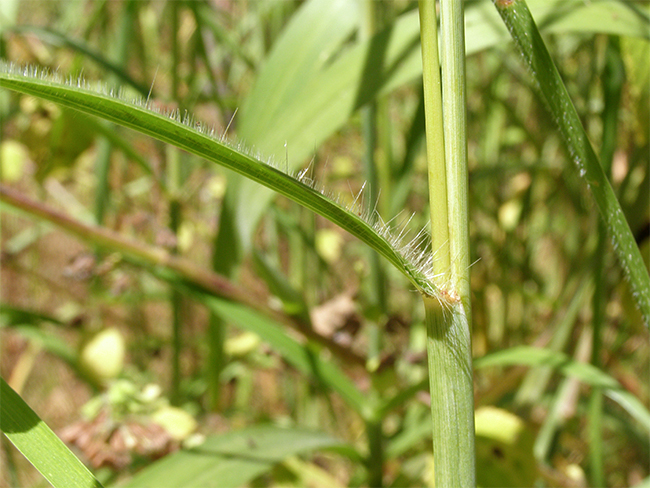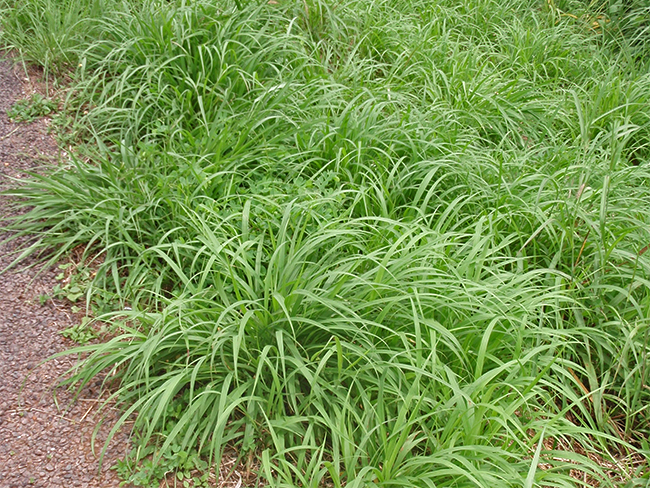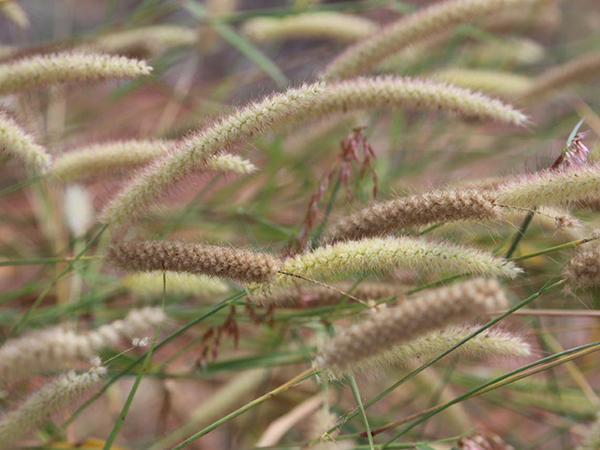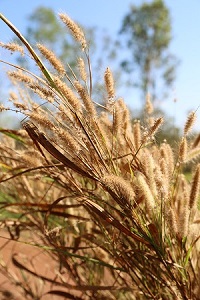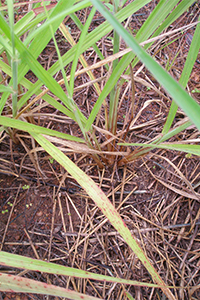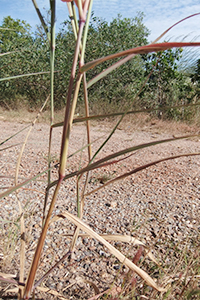Mission grass
Scientific name: Cenchrus polystachios (perennial) and C. pedicellatus (annual)
Declaration status: Class B (perennial) and not declared (annual)
There are two types of mission grass in the Northern Territory (NT): perennial and annual.
While annual mission grass is not a declared weed in the NT, it is recommended that both types be controlled at the same time.
Mission grass is native to tropical Africa.
It was originally introduced into Australia for testing as a pasture species.
Naturalised plants were first noticed in the Darwin area in the early 1970s.
Mission grass has since spread throughout the Darwin rural area and along many road networks.
It also occurs in Arnhem Land and in the Katherine region.
Impact
By remaining green until the late dry season, this grass provides fuel for much hotter fires later in the year. It is also encouraged by repeated burning. The fuel load from this species can be three to five times that of native species.
Mission grass can have all of the following impacts:
- competes with native species
- occupies disturbed areas
- provides fuel for hotter late fires
- fires are detrimental to native species as well as property and horticulture
- is encouraged by repeated burns.
Identification
You should use this as a guide. There may be other plants or weeds that look similar.
To find out more, get the mission grass weed note on the Department of Lands, Planning and Environment website.
If you are unsure, contact the Weed Management Branch.
Control
Annual mission grass can be controlled by slashing prior to seeding (repeated slashing may be required). Adult plants will not persist to the following year. Small infestations of perennial mission grass can be hand pulled. Slashing can prevent seed formation. Regrowth can then be treated with herbicide.
Chemical control
The best time to treat mission grass is from December to March. Below is a list of treatment methods that can be used.
| Chemical and concentration | Rate | Situation, method and notes |
|---|---|---|
|
Glyphosate 360 g/L Various trade names and formulations | 10 ml/L |
Seedling or adult - individuals or infestation: Foliar spray - apply when actively growing |
Non-chemical control
Hand pulling and grubbing
Weeds, including their roots, are physically pulled out of the ground by hand or using hand tools. This is an effective method of control for individual weeds and recent outbreaks that haven’t released seeds yet, but it requires a lot of labour.
Slashing
A brush-cutter, slasher or mower are used to cut weeds off above the ground level. This can be effective in suppressing flower and seed development.
Fire
Burning promotes further mission grass establishment. Fires should be followed up with herbicide application.
Spread
Mission grass is highly invasive, produces vast quantities of seed and has the capacity to spread into both disturbed and undisturbed areas.
The light and fluffy seeds produced by mission grass are easily spread by:
- wind
- vehicles
- machinery
- animals
- contaminated hay.
Spread prevention
You can prevent the spread of mission grass by doing all of the following:
- map infestations to help develop a management plan
- control plants before the seeds mature
- control minor infestations, isolated outbreaks or seedlings first
- designate wash down areas and actively work to prevent contamination of clean areas
- spray any tussocks that grow along fencelines, fire breaks and roadsides or outside paddocks
- make sure hay brought into clean areas for fodder or mulch is weed free
- monitor areas that you have treated and watch for re-infestations.
Give feedback about this page.
Share this page:
URL copied!
